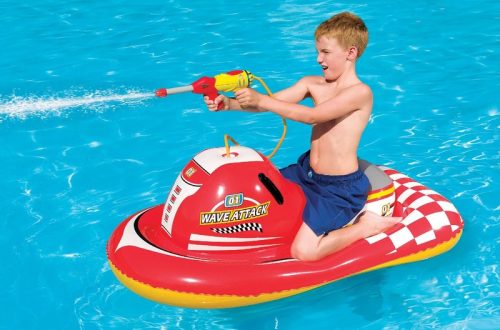Part 1: Understanding the Basics of RC Cars
When it comes to building and customizing your own RC car, it’s important to first understand the basics of how these vehicles work. This includes learning about the different types of RC cars available, such as electric, nitro, and gas-powered models, as well as the various components that make up these vehicles.
Understanding Different Types of RC Cars
When entering the world of RC cars, it’s essential to familiarize yourself with the various types available. One of the primary distinctions lies in their power sources. Electric RC cars are powered by rechargeable batteries, making them a popular choice for beginners due to their ease of use and maintenance. These cars typically offer a quieter and cleaner driving experience.
Nitro RC cars, on the other hand, are fueled by a special blend of nitromethane and methanol. While they offer higher performance and a more realistic engine sound, nitro models require more maintenance, including tuning the engine and refueling. Gas-powered RC cars are similar to nitro models but use regular gasoline as fuel. They provide a balance between performance and ease of maintenance.

Exploring the Components of an RC Car
To truly appreciate and customize your RC car, it’s crucial to understand its various components. The chassis is the foundation of the car, providing structural support and housing the other components. The suspension system allows the car to absorb shocks and maintain traction on different terrains. The motor is the heart of the car, converting electrical or chemical energy into mechanical power. The electronics, including the speed control, receiver, and servo, control the car’s movements and respond to the driver’s input.
By understanding how these components work together, you can make informed decisions when building, customizing, and maintaining your RC car. Whether you’re a beginner or an experienced enthusiast, a solid grasp of the fundamentals will help you get the most out of your hobby.
Part 2: Choosing the Right Kit or Ready-to-Run (RTR) Model
Once you have a good understanding of the basics of RC cars, the next step is to choose the right kit or RTR model for your project. Kits are great for those who want to build their RC car from scratch, while RTR models provide a ready-to-run option for those who want to start driving right away.

Building Your Own RC Car
One of the most rewarding aspects of the RC car hobby is the opportunity to build your own vehicle from scratch. Constructing an RC car kit allows you to have complete control over the components and customization options. This can be a time-consuming process, requiring patience and attention to detail, but it offers a deep sense of satisfaction and accomplishment.
By building your own RC car, you can select the specific parts that align with your preferences and budget. You can customize the chassis, suspension, motor, and electronics to create a unique and personalized vehicle. This level of customization provides a greater sense of ownership and allows you to tailor your car to your individual driving style.
The Convenience of RTR Models
For those who are new to the hobby or prefer a more immediate driving experience, Ready-To-Run (RTR) models offer a convenient alternative. These models come fully assembled and require minimal setup before hitting the track. RTR cars are typically equipped with basic components, but they can often be upgraded with aftermarket parts to enhance performance and customization.
Choosing an RTR model can be a good starting point for beginners as it allows you to experience the thrill of RC car racing without the complexities of building a car from scratch. Once you’ve gained experience and confidence, you can consider building your own car or upgrading your RTR model.
Part 3: Customizing Your RC Car

Customizing your RC car is where the fun really begins. There are countless ways to personalize your vehicle, from changing the body and paint job to upgrading the performance and handling.
Customization Through Body and Paint
One of the most accessible ways to personalize your RC car is by altering its appearance. The body and paint job are key elements that can significantly transform the look of your vehicle. There are numerous aftermarket bodies available in various styles, from realistic replicas of real-world cars to futuristic designs. By selecting a body that aligns with your personal taste, you can give your RC car a unique and eye-catching aesthetic.
In addition to body selection, customizing the paint job can further enhance your RC car’s appearance. Whether you prefer a simple color scheme or a complex multi-color design, there are countless options to explore. You can apply custom decals, airbrush designs, or even use a vinyl wrap to achieve the desired look.
Upgrading for Performance and Handling
Beyond aesthetics, customizing your RC car can also focus on improving its performance and handling characteristics. One of the most common upgrades is installing a more powerful motor. A higher-performance motor can provide increased acceleration, top speed, and overall power.
Another area for customization is the suspension system. Upgrading the shocks, springs, or other suspension components can enhance your car’s handling and stability on various terrains. By adjusting the suspension settings, you can fine-tune your car’s performance to suit your driving style and the specific characteristics of the track you’re racing on.

Part 4: Understanding the Importance of Maintenance
Proper maintenance is key to keeping your RC car running smoothly and ensuring its longevity. Understanding the importance of maintenance and taking the time to care for your vehicle can make a big difference in its performance and durability.
1. Regular cleaning and maintenance:
Like any vehicle, RC cars require regular cleaning and maintenance to keep them in top condition. This includes cleaning the chassis, checking and lubricating moving parts, and inspecting the electronics for any signs of wear or damage.
2. Troubleshooting and repairs:
Despite your best efforts, RC cars may still encounter issues from time to time. Understanding how to troubleshoot and perform basic repairs can save you time and money in the long run, as well as keep your RC car on the road for longer.
Part 5: Joining a Community or Club
Building and customizing RC cars can be a solitary hobby, but it doesn’t have to be. Joining a community or club of like-minded enthusiasts can provide valuable resources, support, and a sense of camaraderie.
Sharing Knowledge and Experiences
One of the most significant advantages of joining an RC car community or club is the opportunity to connect with like-minded enthusiasts. By interacting with other members, you can benefit from their knowledge, experiences, and insights. Whether you’re facing a technical challenge, seeking advice on a customization project, or simply looking to learn new techniques, the collective wisdom of the community can be invaluable.
Participating in discussions, forums, or workshops can help you expand your understanding of RC cars and stay up-to-date with the latest trends and developments. Additionally, connecting with experienced racers can provide valuable guidance and mentorship, helping you improve your driving skills and achieve your racing goals.

Group Events and Competitions
RC car communities and clubs often organize group events and competitions that offer exciting opportunities to showcase your custom creations and connect with other enthusiasts. These events can range from casual gatherings and track days to competitive races and championships.
Participating in group events allows you to share your passion with others, demonstrate your skills, and receive feedback on your car’s performance. It’s also a great way to meet new people, form friendships, and create lasting memories. Moreover, competing in races can be a thrilling and rewarding experience, providing a sense of accomplishment and driving you to push your limits.
Part 6: Safety and Responsibility
Last but certainly not least, it’s important to consider safety and responsibility when building and customizing RC cars. These vehicles can reach high speeds and pose a risk if not used properly.
Safe Driving Practices
When operating an RC car, it’s essential to prioritize safety and be mindful of your surroundings. Always drive in a responsible manner, especially in public areas or around other people. Avoid driving near crowded areas, roads, or bodies of water to minimize the risk of accidents.
Respect local laws and regulations regarding RC car use. Some areas may have specific restrictions or require permits for RC car operation. Familiarize yourself with the rules and regulations in your area to ensure you’re complying with all applicable laws.
Battery and Fuel Handling
Properly handling and storing batteries and fuel is crucial for preventing accidents and ensuring the longevity of your RC car. Always use the correct charging equipment for your batteries and follow the manufacturer’s instructions. Overcharging or using incompatible chargers can lead to battery damage or even fires.
Store batteries in a cool, dry place away from direct sunlight or heat sources. Avoid storing batteries in a fully charged state for extended periods, as this can reduce their lifespan.




